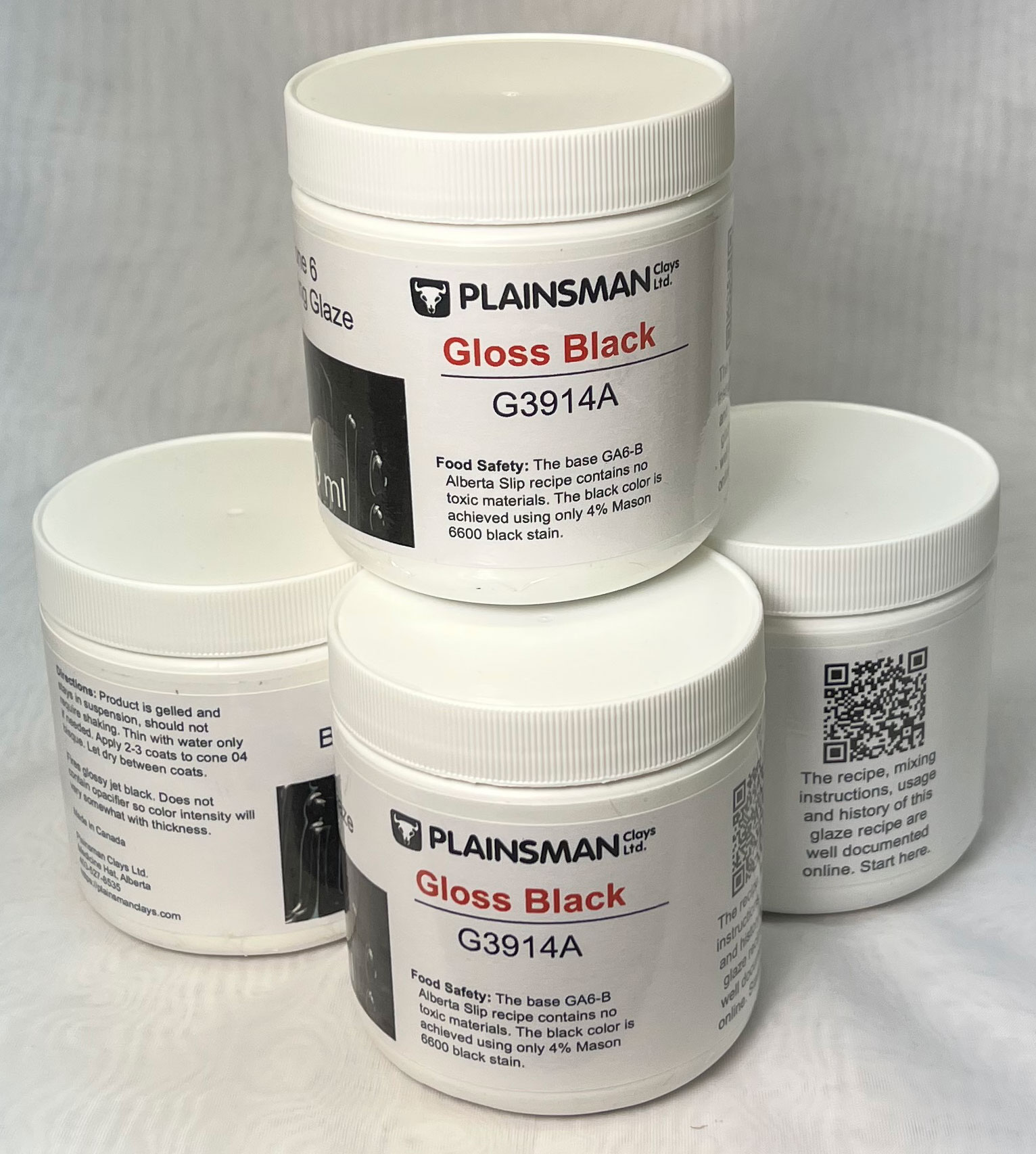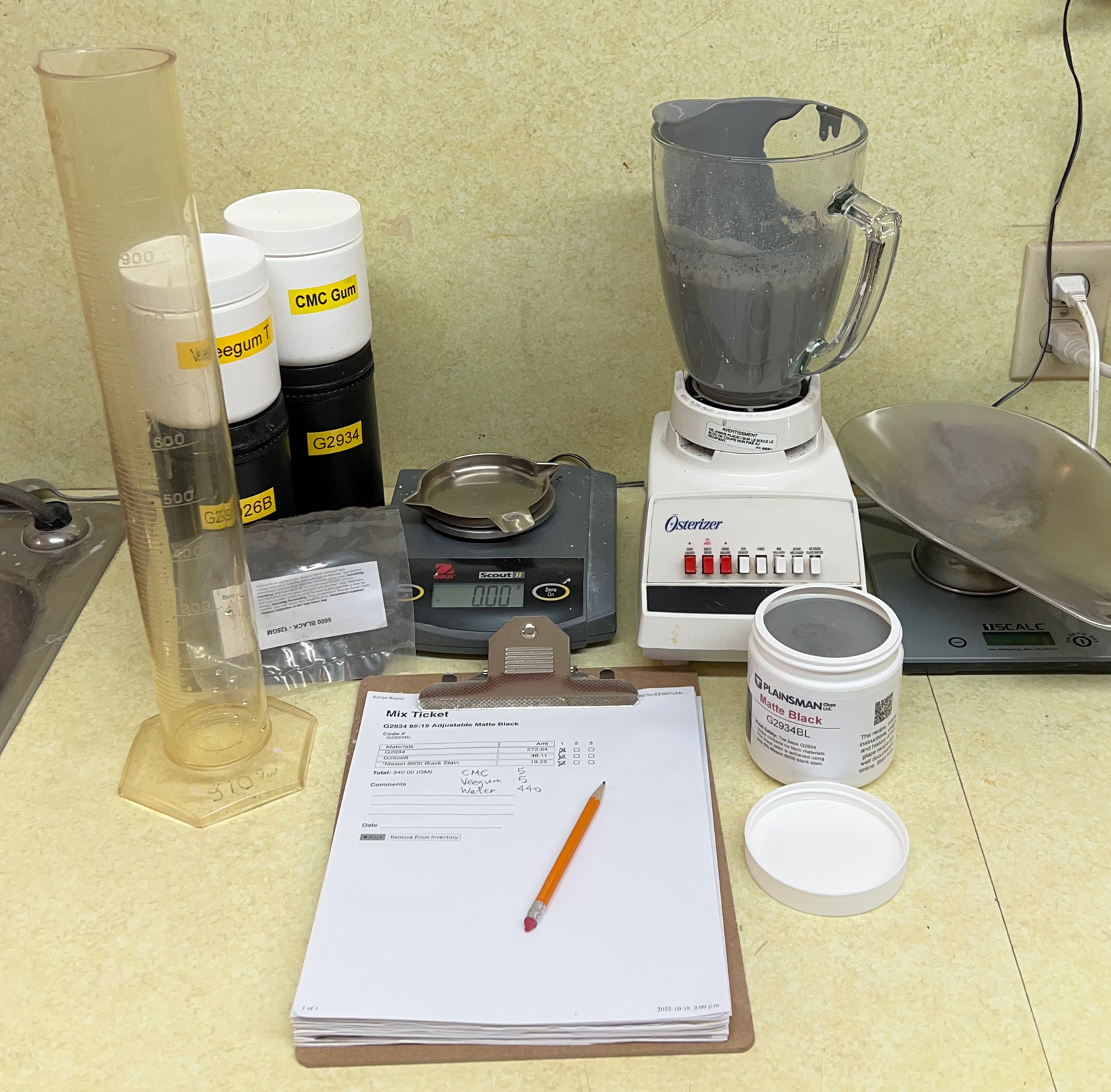| Monthly Tech-Tip | No tracking! No ads! | |
Blender Mixing
An ordinary kitchen blender does a better job of mixing a ceramic slurry than any industrial machine. It even reduces clay particle size and hyper ages it.
Key phrases linking here: blender mixing, blender-mixing, blender mixed, blender-mixed, blender mixes, blender mix, blender-mix - Learn more
Details
Anyone who has an inexpensive kitchen blender can mix glaze batches better than any industrial equipment. These machines can inject so much energy into a slurry that all agglomerates are broken down, particle surfaces are better wetted and many types of clay particles unaffected by normal mixing are actually pulverized to smaller sizes. Recipes containing gum powders can be notoriously difficult to mix with water but using a blender it can be done quickly and thoroughly. Blending a slurry (body or glaze) also quickly ages it, stabilizing the rheology.
Mixing large batches of slurry with a blender, at least for studio use, is practical, especially compared with the difficulty of sieving (which is a batching process also). It is just a matter of repeating a cycle of filling the jar, blending for 30 seconds and emptying.
Many consumer blenders are practical. It is best to use one that has a glass jar, or buy a glass jar on ebay.com. The better brands are the ones with the most active spare parts and accessories markets. Blenders having a metal-to-metal coupling between motor and propeller are the most durable. Industrial blenders with fairly large jars are also available on ebay.com.
Related Information
Get a kitchen blender for mixing ceramic slurries

This picture has its own page with more detail, click here to see it.
Blender mixing is invaluable in slurry preparation in small-scale ceramics and testing. It is quick and so effective that not only are particle surfaces wetted much better, but clay particles can actually be reduced in size (literally ground finer). Slurry rheology is also stabilized. For example, thixotropy can often be achieved naturally, without any additives. Materials that are otherwise impossible to mix into a slurry (e.g. bentonite, Veegum, CMC gum) or just difficult (e.g. titanium dioxide, tin oxide) are no problem. Even slurry-processed porcelains benefit, not only being more plastic, but firing to a more homogeneous surface and to greater density. Just visually, it is easy to see how much improved this MNP slurry is (a local clay with porcelaneous properties). It was mixed using our propeller mixer and seemed OK (on the left). But the improvement after only 20 seconds in the blender (right) is amazing.
Here’s how we make a base brushing engobe

This picture has its own page with more detail, click here to see it.
This brushing engobe is thick and gooey (because it contains CMC gum), so it is practically impossible to sieve. Our regular propeller mixer is not able to break up the tiny agglomerates of New Zealand kaolin. But 30 seconds of blender mixing makes it as smooth as silk. To make this liter of brushing engobe we use 800g of powder and 10g of CMC gum in 800g of water. Because of the very high clay content this does not require Veegum to gel it. The CMC gum greatly improves the brushing properties. It also thins the slurry enough to enable its lower-than-normal water content, making it more suitable for painting onto leather-hard ware, minimizing the number of coats needed.
Two methods to make your own low SG brushing glaze.

This picture has its own page with more detail, click here to see it.
Dipping glaze applies and dries in seconds. Brushing glazes dry slowly and dry hard. Brushing glazes simply have gum in the recipe, dipping glazes typically do not. This is the Alberta Slip cone 6 base, made jet black with 4% black ceramic stain (our code G3914A). We normally mix this as a dipping glaze but I have made a 500ml jar of low SG brushing version using both of the following methods. These methods will work for almost any glaze recipe (for those having exceptionally high clay content less Veegum is needed).
1) Shake together, in a plastic bag, 340g of mixed glaze powder with 5g of Veegum and 5g of CMC gum. Add that to 440g of water in a kitchen blender and mix on high speed until it gels (the gums resist mixing so the highest speed for at least 30 seconds is needed to prevent lumps).
2) Take 680g of dipping glaze (assuming it is about 50:50 water:powder you get 340g of dry), put that in the blender with another 80g of water and proceed as in method 1. Less total water is being used because the dipping glaze might not be exactly 50:50 water:powder. During mixing, if it gels too much add the extra 20g of water.
Here is my setup to make brushing glazes and underglazes by-the-jar

This picture has its own page with more detail, click here to see it.
Although I promote DIY dipping glazes, you can also make DIY brushing glazes. Let's make a low SG version of G2934BL. Weigh out a 340g batch of dipping glaze powder. Include 5g Veegum (to gel the slurry to enable more than normal water) and 5g CMC gum (to slow drying and impart brushing properties). Measure 440g of water initially (adjusting later if needed). Shake-mix all the powder in a plastic bag. Pour it into the water, which is blender mixing on low speed, and finish with 20 seconds on high speed. This just fills a 500ml jar. In subsequent batches, I adjust the Veegum for more or less gel, the CMC for slower or faster drying and the water amount for thicker or thinner painted layers. Later I also assess whether the CMC gum is being degraded by microbial attack - often evident if the slurry thins and loses its gel. Dipping glaze recipes can and do respond differently to the gums. Those having little clay content work well (e.g. reactive and crystalline glazes). If bentonite is present it is often best to leave it out. Recipes having high percentages of ball clay or kaolin might work best with less Veegum. Keeping good notes (with pictures) is essential to reach the objective here: Good brushing properties. We always use code-numbering (in our group account at Insight-live.com) and write those on the jars and test pieces. This is so worthwhile doing that I make quality custom labels for each jar!
Inbound Photo Links
 Don't waste expensive tin oxide, propeller mix glazes well |
Links
| Glossary |
Propeller Mixer
In ceramic studios, labs and classrooms, a good propeller mixer is essential for mixing glaze and body slurries. |
| Glossary |
Slurry Up
The process of slurrying a clay body powder and dewatering it on a plastic slab or table. |
| By Tony Hansen Follow me on        |  |
Got a Question?
Buy me a coffee and we can talk

https://digitalfire.com, All Rights Reserved
Privacy Policy
